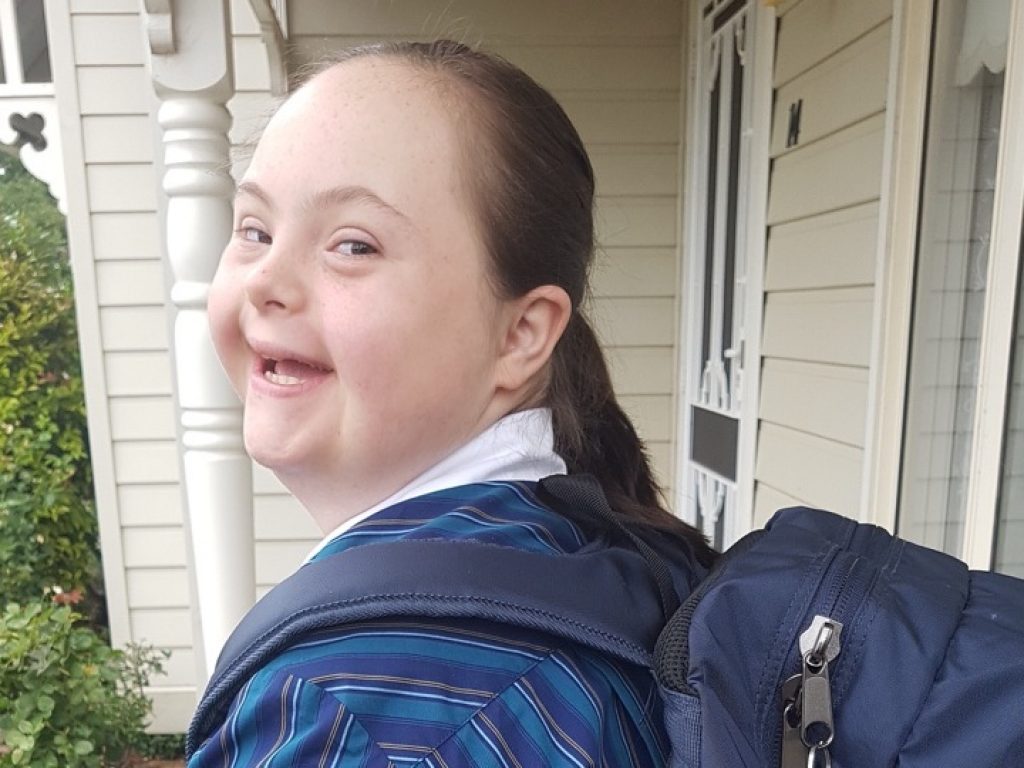When research is not enough
The full article is available in the following formats
Click to download
Dr Glenys Mann is a sessional academic working in the area of inclusive education and has a background in primary school teaching. In this fabulous article, Glenys gives a comprehensive overview of the evidence supporting the case for inclusive education but goes one step further. She also recognises that parents sometimes need more than evidence to advocate for an inclusive environment at the school they choose, and therefore she provides an overview of their rights and useful strategies that parents can use to build good relationship with their chosen school.
’If the research is not enough to secure enrolment in a regular school with an inclusive experience, what more do parents need? I suggest that research evidence, as important as it is, is the icing on the cake. Inclusive education is not just a matter of science. It is a fundamental human right, a means to avoid the damage done by segregation and congregation…’
First published in Voice, April 2018.

Bonus content
- Since this article was published, Down Syndrome Australia has released its comprehensive Community Inclusion Toolkit. The education toolkit provides a wealth of practical fact sheets and resources for parents and teachers to use to better improve the inclusion of children with Down syndrome into general school settings.
Further Reading
§ Australian Institute for Teaching and School Leadership. (2011). Australian professional standards for teachers. Victoria: Ministerial Council for Education, Early Childhood Development and Youth Affairs.
§ Biklen, D. (2015). Why the pursuit of inclusive education cannot be left to science: Lessons from the work of Burton Blatt. In P. Jones, & S. Danforth (Eds.), Foundations of Inclusive Education Research (pp. 187-204). Emerald Group Publishing Limited.
§ Carter, E. W., Asmus, J., Moss, C. K., Biggs, E. E., Bolt, D. M., Born, T. L., . . . Weir, K. (2016). Randomized Evaluation of Peer Support Arrangements to Support the Inclusion of High School Students With Severe Disabilities. Exceptional Children, 82(2), 209-233. doi:10.1177/0014402915598780
§ Cologon, K. (2013). Inclusion in education: towards equality for students with disability. Retrieved from Australia:
§ Cosier, M., Causton-Theoharis, J., & Theoharis, G. (2013). Does access matter? Time in general education and achievement for students with disabilities. Remedial and Special Education, 34(6), 323-332.
§ De Graaf, G., Van Hove, G., & Haveman, M. (2013). More academics in regular schools? The effect of regular versus special school placement on academic skills in Dutch primary school students with Down syndrome. Journal of Intellectual Disability Research, 57(1), 21-38.
§ Emerson, E. (2013). Commentary: Childhood exposure to environmental adversity and the well‐being of people with intellectual disabilities. Journal of Intellectual Disability Research, 57(7), 589-600.
§ Fisher, M., & Meyer, L. H. (2002). Development and social competence after two years for students enrolled in inclusive and self-contained educational programs. Research and Practice for Persons with Severe Disabilities, 27(3), 165-174. doi:10.2511/rpsd.27.3.165
§ Forlin, C., Chambers, D., Loreman, T., Deppeler, J., & Sharma, U. (2013). Inclusive education for students with disability: A review of the best evidence in relation to theory and practice. Retrieved from Canberra:
§ Georgiadi, M., Kalyva, E., Kourkoutas, E., & Tsakiris, V. (2012). Young children’s attitudes toward peers with intellectual disabilities: Effect of the type of school. Journal of Applied Research in Intellectual Disabilities, 25(6), 531-541. doi:10.1111/j.1468-3148.2012.00699.x
§ Jackson, R. (2008). Inclusion or segregation for children with an intellectual impairment: What does the research say? Retrieved from Brisbane: http://www.family-advocacy.com/resources/inclusion-or-segregation-for-children-with-an-intellectual-impairment-what-does-the-research-say/
§ Kleinert, H., Towles-Reeves, E., Quenemoen, R., Thurlow, M., Fluegge, L., Weseman, L., & Kerbel, A. (2015). Where Students With the Most Significant Cognitive Disabilities Are Taught: Implications for General Curriculum Access. Exceptional Children, 81(3), 312-328. doi:10.1177/0014402914563697
§ Kvalsund, R., & Bele, I. V. (2010). Students with special educational needs—Social inclusion or marginalisation? Factors of risk and resilience in the transition between school and early adult life. Scandinavian Journal of Educational Research, 54(1), 15-35.
§ Lalvani, P. (2013). Land of misfit toys: Mothers’ perceptions of educational environments for their children with Down syndrome. International Journal of Inclusive Education, 17(5), 435-448. doi:10.1080/13603116.2012.683047
§ Lombardi, A., Doren, B., Gau, J. M., & Lindstrom, L. E. (2013). The influence of instructional settings in reading and math on postsecondary participation. Journal of Disability Policy Studies, 24(3), 170-180.
§ Mazzotti, V. L., Rowe, D. A., Sinclair, J., Poppen, M., Woods, W. E., & Shearer, M. L. (2016). Predictors of post-school success: A systematic review of NLTS2 secondary analyses. Career Development and Transition for Exceptional Individuals, 39(4), 196-215. doi:10.1177/2165143415588047
§ McDevitt, T. M., & Ormrod, J. E. (2008). Fostering conceptual change about child development in prospective teachers and other college students. Child Development Perspectives, 2(2), 85-91.
§ McLeskey, J., Waldron, N. L., & Redd, L. (2014). A case study of a highly effective, inclusive elementary school. The Journal of Special Education, 48(1), 59-70.
§ National Council on Intellectual Disability. (2013). The right of persons with disabilities to an inclusive education without discrimination: Submission to the office of the United Nations High Commissioner for Human Rights. Retrieved from ACT Australia:
§ Novak Amado, A., Stancliffe, R. J., McCarron, M., & McCallion, P. (2013). Social Inclusion and Community Participation of Individuals with Intellectual/Developmental Disabilities. Intellectual and Developmental Disabilities, 51(5), 360-375. doi:doi:10.1352/1934-9556-51.5.360
§ Pfahl, L., & Powell, J. J. W. (2011). Legitimating school segregation: The special education profession and the discourse of learning disability in Germany. Disability & Society, 26(4), 449-462. doi:10.1080/09687599.2011.567796
§ Rossetti, Z. (2014). Peer Interactions and Friendship Opportunities Between Elementary Students With and Without Autism or Developmental Disability. Inclusion, 2(4), 301-315.
§ Ryndak, D. L., Alper, S., Hughes, C., & McDonnell, J. (2012). Documenting the impact of educational contexts on long-term outcomes for students with significant disabilities. Education and Training in Autism and Developmental Disabilities, 47(2), 127-138. Retrieved from jstor website – offers 3 free articles; I joind up
§ Siperstein, G. N., Norins, J., & Mohler, A. (2007). Social acceptance and attitude change. In J. W. Jacobson, J. A. Mulick, & J. Rojahn (Eds.), Handbook of intellectual and developmental disabilities (pp. 133-154). New York: Springer.
§ Szumski, G., Smogorzewska, J., & Karwowski, M. (2017). Academic achievement of students without special educational needs in inclusive classrooms: A meta-analysis. Educational Research Review.
§ Test, D., Mazzotti, V., L., Mustian, A., L., Fowler, C., H. , Larry, K., & Kohler, P. (2009). Evidence-based secondary transition predictors for improving postschool outcomes for students with disabilities. Career Development for Exceptional Individuals, 32(3), 160-181. doi:10.1177/0885728809346960


0 Comments